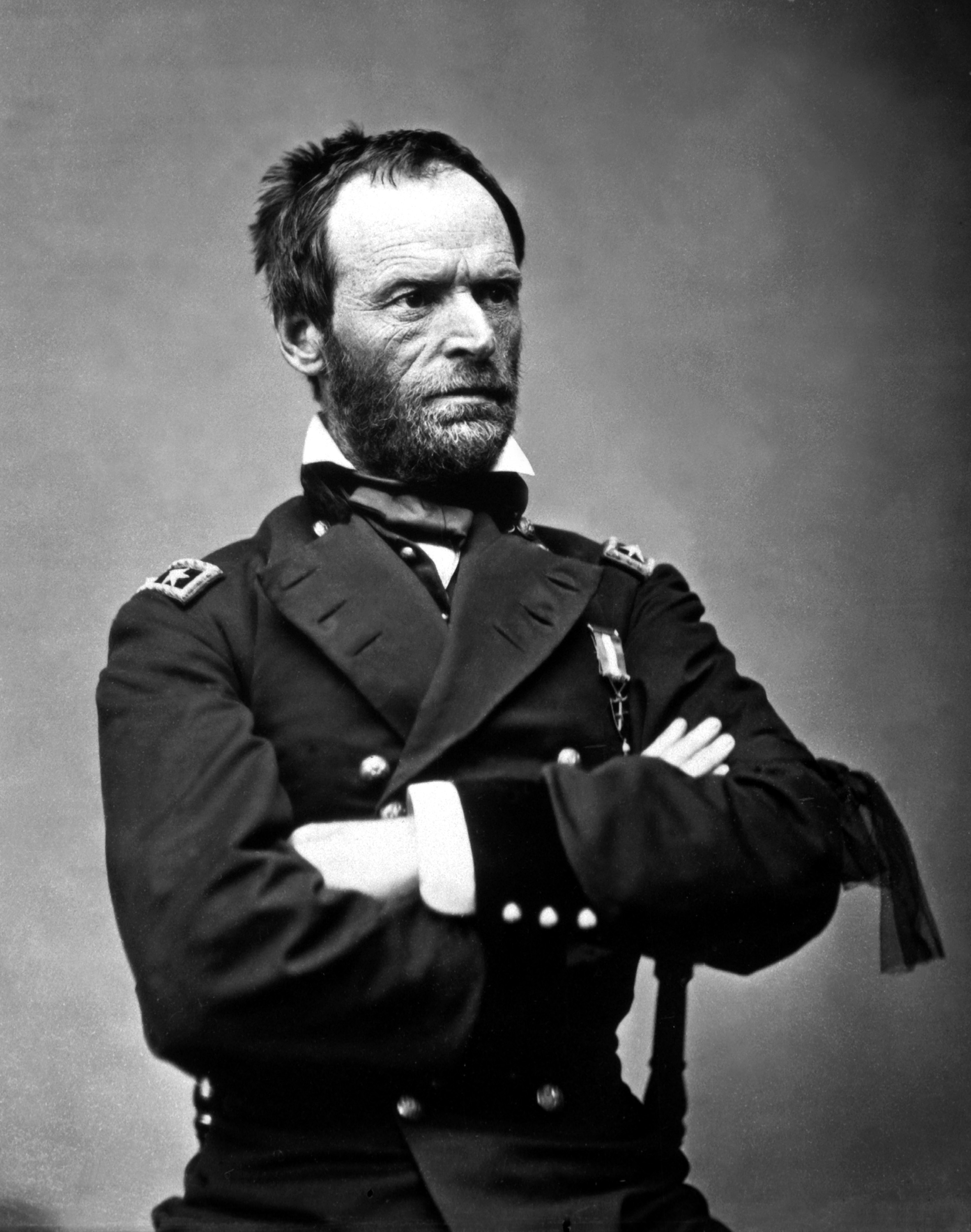Today marks the 125th anniversary of the death of legendary American General William Tecumseh Sherman, famed for his military strategy during the American Civil War whilst at the same time criticized for his 'scorched earth' policies. Serving under Ulysses S. Grant, Sherman led Union forces to victory in a number of battles before succeeding Grant as commander in the western theater of war.
In this role he continued to see success, capturing the city of Atlanta before starting his famous March to the Sea.
The extract below comes from Campaign 290: Atlanta 1864 by James Donnell, talking about the Union plans for the Atlanta campaign:
"When Sherman met with his subordinate commanders in March 1864, to plan the upcoming campaign, he wrote that “General Johnston seemed to be acting purely on the defensive, so that we had time and leisure to take all our measures deliberately and fully.” Johnston was obviously disinclined to come out of his reinforced position along Rocky Face Ridge to challenge a superior Union force. Sherman’s detailed planning was aided by the fact that, in February, a sequence of events had occurred that provided Union forces an opportunity to reconnoiter Johnston’s position.
On February 3, Sherman, then commanding the Army of the Tennessee at Vicksburg, marched 130 miles to Meridian, Mississippi, to tear up the railroad and destroy the Confederate arsenal there. Without Meridian’s supply base and transportation system, it would be tremendously difficult for a Confederate force to mount an attack in the direction of the Mississippi River, thus freeing up additional Union manpower for the forthcoming campaigns.
Davis and Bragg directed Lieutenant-General Polk, commander of Confederate forces in Mississippi, to confront Sherman, with support from Lieutenant-General Hardee’s Corps, currently in winter quarters at Dalton. Grant immediately saw an opportunity, and directed General Thomas and elements of the Army of Cumberland to advance south from Chattanooga, “to push the enemy as much as possible,” hoping not only to test Johnston’s defenses but also to force the Rebels to reconsider sending forces against Sherman. Between February 22 and 27, Thomas occupied Ringgold and Tunnel Hill, then assailed the Confederate fortifications at Mill Creek Gap, Dug Gap, and Crow Creek Valley. Polk, more concerned that an attack on Mobile was imminent, turned back before reaching Meridian, and Hardee never departed Dalton. Thomas reported, “Inasmuch as it caused the recalling of re-enforcements sent to oppose General Sherman’s expedition against Meridian, I concluded to withdraw my troops to the positions they had occupied previous to the reconnaissance.”
Johnston refuted that Thomas’s probing accomplished anything, but it did provide the Federal leadership with valuable intelligence. Sherman knew not only that a direct assault on Dalton was impractical, but also that there was a passage around Dalton via Snake Creek Gap, which led to Resaca, on the Western & Atlantic Railroad. With Resaca in Union hands, Johnston would be cut off from his line of communications to Atlanta and Richmond. He would thus have no choice but to fight or retreat.
Sherman planned accordingly. In a pattern he would follow, with a few notable exceptions, throughout the campaign, he would use the largest of his three armies, Thomas’s Army of the Cumberland, to move against the center of Johnston’s line on Rocky Face Ridge, hopefully holding the Rebels in place or forcing them to come out of their entrenchments, while his two smaller armies attacked the flanks. In particular, he would send McPherson’s Army of the Tennessee south through Snake Creek Gap to seize the railroad at Resaca. Once Johnston’s army was surrounded, and destroyed, the occupation of Atlanta would follow as a matter of course."
If you'd like to read more be sure to pick up Campaign 290: Atlanta 1864, available at a 25% discount until the end of today!


Comments
You must be logged in to comment on this post. Click here to log in.
Submit your comment